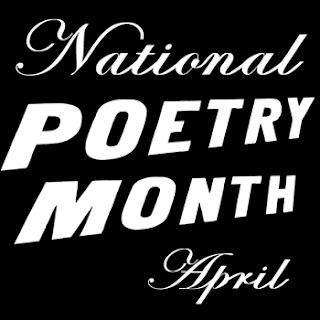 |
| April was designated National Poetry Month in 1996. Image courtesy: American Academy of Poets |
On the surface, science and poetry may seem like polar opposites and the poet and the scientist like two different breeds. But the two realms have a deeply entwined past, and there are some interesting similarities. Both poetry and science require keen observation skills and precision in word choice. Both are outlets for exploring and describing the world around us. And both have elements of creativity and inspiration. (More on this in our module Creativity in Science.)
Even in modern society, where we tend to specialize in a particular field of study and professional practice, there have been notable scientist-poet crossovers, as well as poets who have written beautifully about science. Among the many examples are:
- Lewis Thomas, the "poet-philosopher of medicine" and former president of the Memorial Sloan-Kettering Cancer Center, who wrote popular essays (eventually compiled into two best-selling books) and poetry about cells, disease, medicine, and evolution;
- Chemistry Nobel laureate, Roald Hoffmann, who pens poetry and plays tackling a variety of scientific and nonscientific topics; and
- Philip Appleman, one of the world's leading experts on Charles Darwin, who is well known for his celebrated volumes of poetry illustrating Darwin's life and theories.
1) Draw inspiration from some accomplished science and nature poets using resources from The Poetry Foundation and the American Academy of Poets. For starters, try:
Ten Poems to Get You Through Science Class This Year (we're not crazy about the title given to this collection, but the selected poems from across several generations and scientific disciplines can certainly inspire before, after, or during science class)
The Sciences Sing a Lullabye by Albert Goldbarth
Darwin’s Bestiary by Philip Appleman
Haiku Journey by Kimberly Blaeser
2) Try your hand at writing a science poem. We suggest beginning with the short, powerful haiku form, which the Poetry Foundation describes as:
A Japanese verse form of three unrhyming lines in five, seven, and five syllables. It creates a single, memorable image, as in these lines by Kobayashi Issa, translated by Jane Hirshfield:Developing a talent for writing haiku, like any form of art (or science), takes effort, thought, and practice. Capturing a moment is difficult enough, let alone distilling it down to 17 syllables. But beginners in all fields must start somewhere, and the short, flexible form of a haiku can be less intimidating than penning a sonnet, a ballad, or a even a limerick. And whether it's your first attempt or your 400th, haiku is always a great work-out for the creative muscles.
On a branch
floating downriver
a cricket, singing.
(In translating from Japanese to English, Hirshfield compresses the number of syllables.)
3) Share your poem. Swap haikus with a colleague, classmate, or friend. And please inspire others by posting it in the comments section here or on our Facebook page. To break the ice, I've posted a couple of my own attempts below. I'm sure you can do much better, so get writing!
Happy National Poetry Month!








Nobel gases whose
ReplyDeleteelectrons refuse to bond
Forever lonely
Sun shines so brightly
ReplyDeleteFilters through the grasping leaves
Western hemlock waits
Garnet, mica, talc,
ReplyDeleteUpturned beds and magma hot,
Geology rocks.